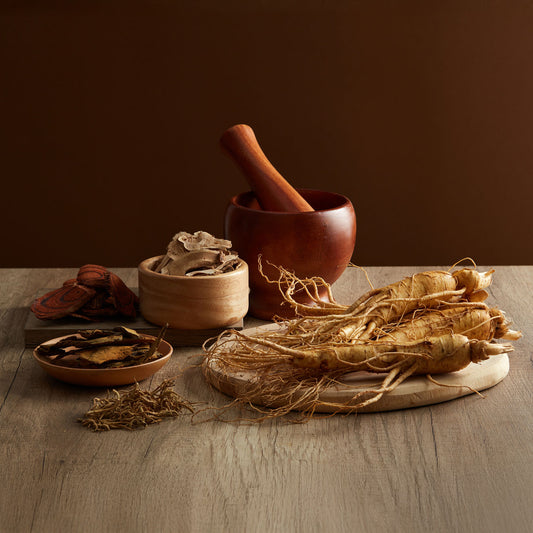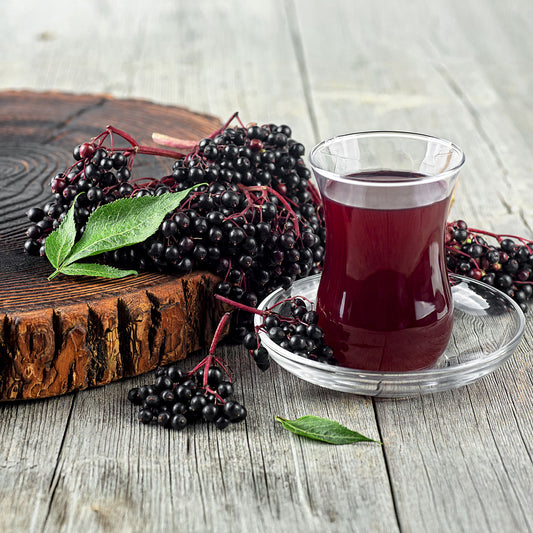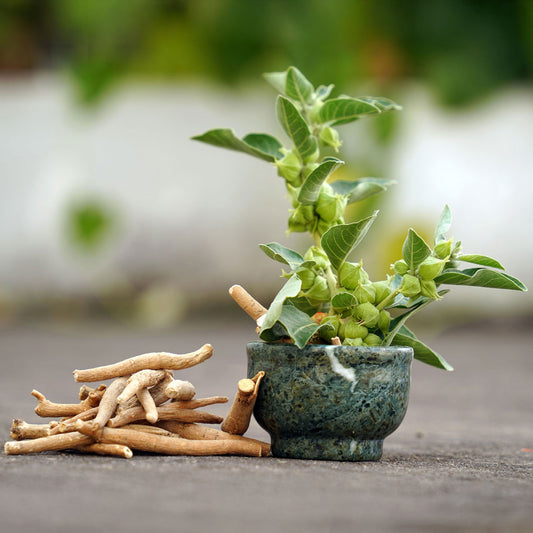Latin Name: Panax ginseng (Asian Ginseng), Panax quinquefolius (American Ginseng)
Common Names: Asian Ginseng, Korean Ginseng, Chinese Ginseng, American Ginseng
Botanical Description
Ginseng refers to a group of slow-growing perennial plants with fleshy roots in the Araliaceae family. Both Panax ginseng (native to Asia) and Panax quinquefolius (native to North America) are commonly used in herbal formulations. The plant features compound leaves with five leaflets, small greenish-white flowers, and bright red berries. The root is the part most often used.
Growing Conditions
Asian ginseng (Panax ginseng) thrives in cool, forested regions of China, Korea, and Russia, while American ginseng (Panax quinquefolius) is found in forested regions of the United States and Canada. Both species prefer shaded environments with rich, well-drained soil that mimics their natural woodland habitat. Ginseng plants grow slowly and require several years to mature before they can be harvested for medicinal purposes.
Traditional and Contemporary Uses
Ginseng has been used for over 2,000 years in traditional Chinese and Korean health practices. It is often valued for its supportive effects on vitality and overall well-being.
In modern herbal use, ginseng is typically included in formulations to support:
- Energy and vitality: Ginseng is widely regarded for helping to maintain physical endurance and energy levels, especially during times of occasional stress.
- Cognitive function: Traditionally used to support mental clarity and focus.
- Adaptation to stress: As an adaptogen, ginseng is believed to help support the body’s natural response to occasional physical and emotional stress.
- Immune support: Ginseng has a history of traditional use for supporting immune health and promoting overall well-being.
Constituents
The primary active compounds in ginseng are ginsenosides, also called panaxosides, which are thought to contribute to the herb’s beneficial effects. There are over 30 different ginsenosides found in ginseng roots, each offering a slightly different action. Other compounds found in ginseng include polysaccharides, peptides, and polyacetylenes.
Harvesting and Sustainability
Ginseng roots require at least 4 to 6 years to mature before they are harvested. Wild populations of ginseng, especially Panax quinquefolius, are at risk due to overharvesting, making sustainability a significant concern. Ethical sourcing of cultivated ginseng is important to protect the remaining wild populations.
Precautions and Considerations
Ginseng is generally well-tolerated when used appropriately, but individuals who are pregnant, nursing, or taking medications, particularly for diabetes or blood pressure, should consult with a healthcare professional before using ginseng supplements. Prolonged or excessive use may not be suitable for everyone, so it is important to follow dosage recommendations.




